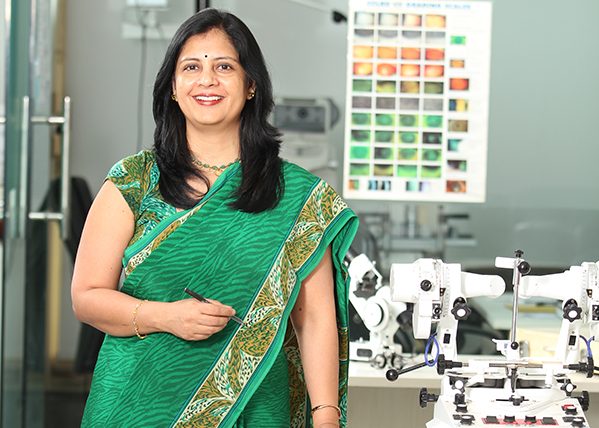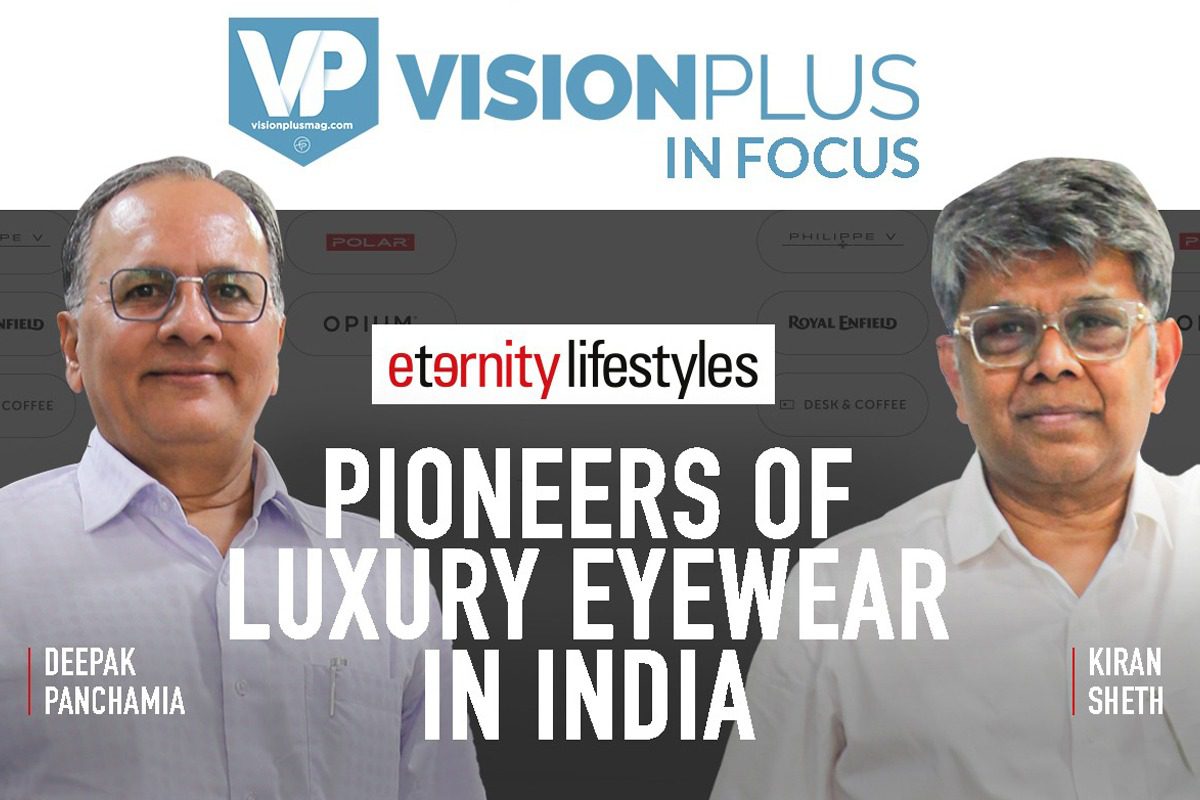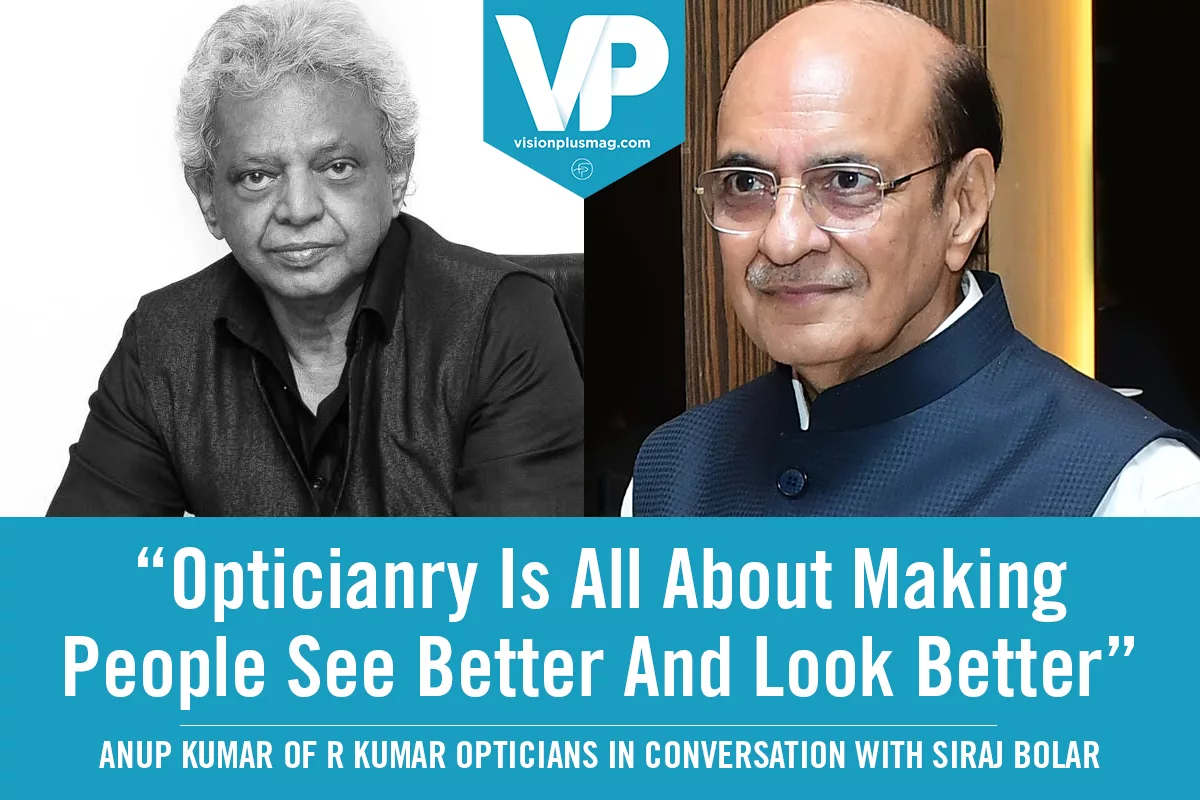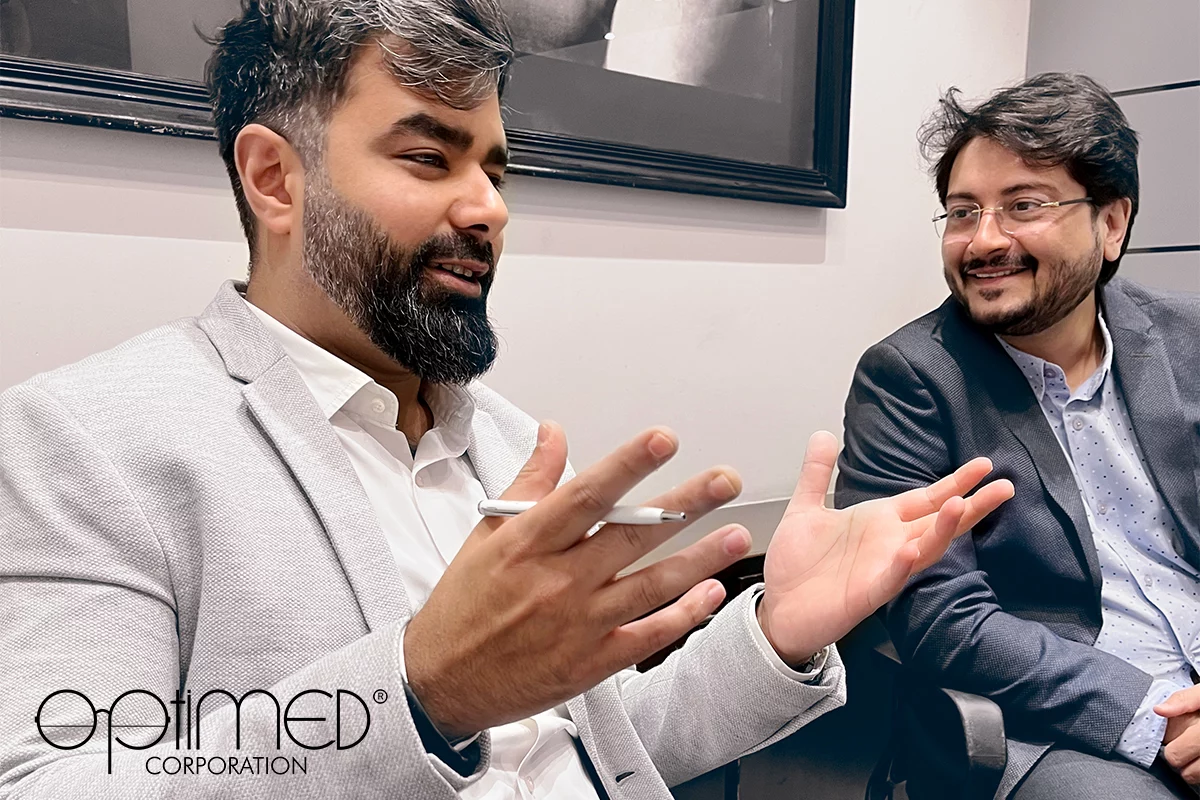Professor Monica Chaudhry, Head of Department of Optometry & Vision Science, Amity Medical School, tells us how the school is helping shape the eye care landscape in India by imparting world-class education
Since its establishment in 2011, Amity Medical School (AMS) has been consistently working to develop competent professionals who can rise up to meet national and global healthcare challenges. Professor Monica Chaudhry, Head of Department of Optometry & Vision Science at AMS, shares how her department is playing its part in fulfilling this mission.
VisionPlus (VP): What inspired you to pursue optometry as a profession?
Professor Monica Chaudhry (MC): I did not consciously decide to join optometry school at AIIMS in 1983. I wished to join medicine, but destiny veered me towards optometry. At that time optometry was a new profession, quite unheard of. But I was positive about my decision as it was a medical profession and I always wanted to be in the healthcare sector.
VP: What goals has your department set for itself and the students?
MC: We have four main goals: to impart optometry education that matches international standards, to create minds that are research-oriented, to develop sensitivity towards community service and eye care through optometry, and to facilitate industry integration.
VP: Amongst the optometry courses and facilities offered by the school, what would you consider as the highlights at Amity?
MC: The optometric education imparted at Amity is both theoretical and practical, run in strategic collaboration with leading hospitals, healthcare providers and optical chains. Our students examine patients under the supervision of experienced clinicians to develop competence in clinical skills. Also, there is a well-maintained student-teacher ratio at Amity.
Training in collaboration with the industry forms an integral part of our curriculum. We are a member of the World Council of Optometry and follow the common minimum optometry curriculum designed by ASCO. We also have the support of Brien Holden Vision Institute teaching resources and India Vision Institute (IVI).

One of Amity’s strengths is its dual degree and flexi credit curriculum. We offer a minor track along with optometry; there are more than 31 tracks from other disciplines which a student can choose as a minor track, besides optometry. These may range from management, psychology, journalism, engineering, law, etc. We also have an option of elective subjects. Besides the core subjects students have choices based on their interest areas to learn skills in selected elective courses. It is mandatory to study a foreign language; choices range from French, German, Russian, Korean, Chinese, Spanish, etc. An English communication course is also taken up throughout the year. Behavioural Science and Environmental Science are also value-added mandatory courses.
Research is well-integrated in our curriculum right from the second semester, besides the quantitative dissertation in the last year of the programme. Recently, an MoU has been signed with AVRI (Africa Vision Research Institute) and IVI to enhance the scope of research. Our integrated curriculum, thus, is designed to promote all-round development of students.
VP: What career opportunities can students explore, in India or abroad, after graduation?
MC: Most new graduates initially prefer to work with optometrists employed with large optical chains, in eye clinics/hospitals, and occasionally with ophthalmologists. An optometrist can find good opportunities in urban, semi-urban, rural settings, as well as in private, semi-governmental and governmental sectors. Nowadays, many of them prefer to be self-employed and open an independent practice. Some of them continue their studies through research and training. Post graduates also find good academic positions in various optometry schools. This field also provides attractive employment opportunities abroad.
Optometrists will find lucrative job opportunities in specialised eye clinics of hospitals, independent eye clinics, optometric education or scientific research, NGOs associated with eye care projects, optical stores, eye care industry, and in a teaching/academic role.

VP: What, according to you, needs to change in India to help improve eye care facilities?
MC: Today, it is estimated that about half of the population of India (approximately 0.5 billion people) have some form of refractive error, and that around 138 million of them are visually impaired due to uncorrected refractive errors. This problem stems from lack of qualified optometrists. India estimates a requirement of near 2 lakh institutionally qualified optometrists as opposed to current availability of a mere 10,000. Now, with new hospitals and optical chains opening up, optometrists are much in demand. This demand for qualified optometrists is expected to go up exponentially in the coming years.
Two aspects which need to be paid immediate attention to by the government are standardisation of education and legislation, without which we will not be able to attract good students to this field and the eye care needs of the country will be difficult to resolve. There are so many mediocre diploma/certificate/vocational courses being offered by institutes today that we have optometrists mushrooming all over the country, but not all of them are competent. Such courses do not serve the interests of the public, but are instead a threat and should be stopped. To address these issues, a self-regulatory body has been formed by Indian Optometry Federation and Association of Schools and Colleges of Optometry this year – the Optometry Council of India.

VP: Any insights that you would like to share with students?
MC: Optometry has a bright future in India. It is an upcoming branch with good career opportunities. It offers both holistic and academic satisfaction for those who are looking for a career in the health sector.
VP: Thank you for your valuable time and insights, Professor Monica Chaudhry.
An Overview Of The Optometry Programmes Offered At AMS:
Bachelor of Clinical Optometry (B.Optom)
Eligibility: For 1st year,10+2 or its equivalent with minimum of 50 per cent marks in Physics, Chemistry, Biology / Mathematics
Lateral Entry (For 2nd / 3rd year) Eligibility: Diploma in optometry or its equivalent from a recognised institute
Batch size: 35
Duration: 4 years (3 years + 1 year internship)
Master of Clinical Optometry (M.Optom)
Eligibility: Bachelor of clinical optometry or equivalent with minimum 50 per cent marks from a recognised university
Batch size: 15
Duration: 2 years (1 ½ years + 6 months internship)
Master of Clinical Optometry (M.Optom) For Practitioners
Eligibility: Bachelor of clinical optometry or equivalent with minimum 50 per cent marks from a recognised university with minimum 3 years experience post bachelors
Duration: 2 years (Blended learning – part time)
The admission process starts from March every year and courses commence from August with a semester based system. Applicants can write to admissions@ggn.amity.edu or apply online through www.amity.edu/gurgaon or call 0124-2337015/16.












